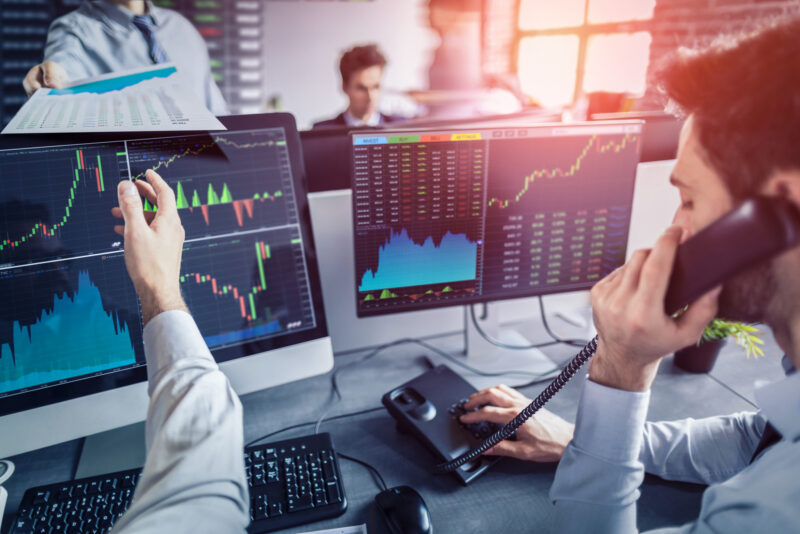In the vibrant realms of gaming and trading, an intriguing parallel emerges, drawing us into a world where strategy, risk, and reward dance together in an intricate waltz. At first glance, these two domains may seem worlds apart—gamers immersed in fantastical landscapes, battling mythical monsters, while traders navigate the volatile tides of stock markets and cryptocurrency exchanges.
Yet, as we peel back the layers, an underlying mindset begins to reveal itself, one characterized by quick decision-making, a hunger for competition, and an unwavering resilience against setbacks. Both gamers and traders thrive in an environment brimming with uncertainty, adapting, learning, and recalibrating their strategies with each iteration.
This shared approach to challenges connects them more deeply than one might expect, illustrating that whether theyre chasing high scores or market highs, the essence of their pursuits is remarkably similar. In this article, we delve into the complexities that intertwine these two worlds, exploring how the psychological underpinnings of gamers and traders resonate in striking ways, ultimately reshaping our understanding of both activities.
The Psychology of Decision Making: Risk and Reward

In the intricate dance of decision making, both gamers and traders navigate a landscape filled with uncertainty, where the scales of risk and reward are ever in flux. The psychology behind their choices often mirrors the age-old game of chance: every action carries potential consequences, and the weighing of probabilities becomes instinctual.
Gamers face high-stakes scenarios with each player interaction, assessing not only their own moves but also anticipating those of others, much like traders who parse market signals using tools like depth of market software to understand order flow and liquidity amid the chaos of fluctuating prices. The thrill of the potential payoff—be it a rare loot drop or a lucrative stock surge—ignites a similar adrenaline rush, driving both communities to become adept at risk assessment.
Moreover, emotional responses play a pivotal role; the thrill of victory is potent, yet the sting of loss can cloud judgment, prompting impulsive decisions. Such parallels underscore a fascinating truth: whether seated in front of a screen slaying monsters or meticulously analyzing market trends, the human mind grapples with choices that can encapsulate both fear and exhilaration in equal measure.
Strategy Development: Planning for Victory

Strategy development in both gaming and trading is akin to crafting a battle plan, where every move can lead to either triumph or defeat. In the ever-evolving landscape of markets and virtual arenas, players and traders alike are engaged in a constant dance of foresight, analyzing both their own capabilities and those of their opponents.
The most successful among them rely on a blend of meticulous research and instinctual decision-making, continually adapting to new information and shifting dynamics. Each session, whether it’s a high-stakes poker game or the unpredictable stock exchange, demands a proactive mindset—anticipating not only the expected but also the wildcards that can turn the tide. Ultimately, while the environments differ, the underlying strategies reflect a shared ethos: plan with precision, adapt with agility, and strike decisively when opportunity aligns with preparation.
Adaptability and Flexibility: Thriving in Dynamic Environments

In the fast-paced worlds of gaming and trading, adaptability is not just a skill—its a survival strategy. Gamers, faced with ever-evolving challenges, learn to pivot at a moments notice; they adjust their tactics based on the unpredictable nature of their environment, similar to traders who must analyze shifting market trends and react swiftly to global events.
Both realms demand an acute awareness of surrounding dynamics, where decisions are often made under pressure and require a delicate blend of intuition and analysis. Think about a player who suddenly finds themselves against a formidable opponent; they must read the room, recalibrate their strategy, and perhaps even redefine their objectives to turn the tide.
Likewise, a trader might need to abandon a long-held position in favor of a more lucrative opportunity arising from a surprising newsflash. This parallel illustrates how both gamers and traders thrive in uncertainty, harnessing their ability to adapt and remain flexible, ultimately leading them to succeed in their respective arenas.
Conclusion
In conclusion, the parallels between gamers and traders reveal a fascinating intersection of strategy, risk management, and psychological resilience. Both groups navigate high-stakes environments that demand quick thinking, adaptability, and a keen understanding of market dynamics—whether those markets are virtual or financial.
By leveraging tools such as depth of market software, traders can enhance their decision-making processes in ways that mirror a gamers strategic planning. Ultimately, recognizing the similarities in mindset not only fosters a deeper appreciation for the skills shared by these two communities but also highlights the broader implications of strategic thinking in our increasingly interconnected world.
This shared mindset underscores the importance of not only honing specific skills but also cultivating a mental framework that can thrive in the face of uncertainty and challenge.


